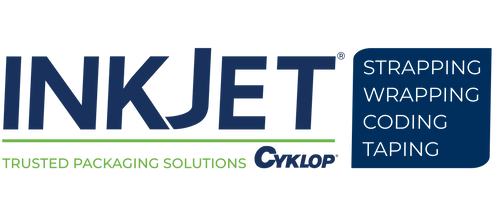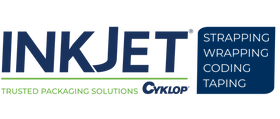A Comparison of Different Aviation and Aerospace Part Marking Solutions
For those working in aviation or aerospace component production, direct part marking is most likely a common practice. Both the aviation and aerospace fields are subject to rigid marking standards, whether due to internal policy or an external system such as Spec 2000 or SAE AS9132. Regardless of origin, these marking systems require manufacturers to mark parts with either 1D barcodes or 2D data matrices. These markings convey important production information to customers and enable full traceability throughout the supply chain.
To create these codes, aviation and aerospace manufacturers utilize a variety of marking methods based on the substrate, cost factors, required production speed, and more. The most common aviation/aerospace part marking solutions include:
-
Continuous inkjet (CIJ) printing
-
Dot peen marking
-
Electrochemical etching
Laser marking is another common direct part marking method, but given the tremendous diversity within the laser technology field, this article will take the more straightforward approach and compare continuous inkjet printing, dot peen marking, and electrochemical etching, in addition to profiling their strengths and demonstrating where each method is preferable.
Aviation and Aerospace Part Marking Solution #1: Continuous Inkjet Printing
Continuous inkjet (CIJ) printing is a non-contact marking method that’s been used for industrial applications since the early 1950s. CIJ printers are designed for continuous operation on high-speed production lines, including those moving at over 1,000 feet per minute. The piezo printheads of CIJ printers allow them to print on both flat and curved surfaces, while their diverse ink compatibilities enable them to effectively mark a wide variety of substrates.
The versatility of CIJ printers is especially helpful to those in aviation/aerospace manufacturing who create parts from assorted metals and other hard materials. With the right ink, CIJ printers can mark:
CIJ printers are affordable, intuitive to use, and can be easily integrated into an existing production system. With the right ink, CIJ-produced codes last long, dry quickly, and are easily read by scanners. However, the codes are not impervious to excessive physical abuse and may become illegible when exposed to certain solvents. If a coded surface may be subjected to either of these conditions, physical marking methods like dot peen marking or electrochemical etching may be a better choice.
Aviation and Aerospace Part Marking Solution #2: Dot Peen Marking
Dot peen marking systems use an indenting pin to create the individual dots that collectively make up a 2D data matrix. By creating a difference in light contrast between the indented dots and the surrounding surface, dot peened data matrices become machine-readable.
Like CIJ printers, dot peen marking systems require a low initial investment. The marks they leave are permanent, and because the indents are shallow, they do not damage the overall integrity of the product. However, dot peen marking does have its shortcomings.
Many thinner products are not suitable for dot peen marking as they do not have the mass necessary to be indented without compromising the material. Additionally, indenting pins must be replaced regularly, creating an on-going expense and a possible source of repeated downtime. Additionally, they are not a suitable marking option for less sturdy materials, such as titanium, magnesium, ceramics, and glass.
Aviation and Aerospace Part Marking Solution #3: Electrochemical Etching
While not as common as CIJ printing or dot peen marking, electrochemical etching is a way to create permanent, high-resolution codes on metal surfaces through electrolysis—a chemical decomposition process created by passing electricity through electrolyte liquid.
During electrochemical etching, a template featuring the intended code is placed tightly on the substrate’s surface, exposing only the area that is to be etched. Both the substrate and a stamp are electrically charged and the stamp is dampened with electrolyte. The stamp is applied to the template which leads the current to etch the design into the substrate itself.
Electrochemical etching is a very precise method that creates highly readable codes. The technology is affordable and easy-to-use, but compared to dot peen marking—and especially CIJ printing—it is not very versatile. It only works with conductive metals, thus eliminating any applications related to ceramics, glass, plastics, or rubbers. Pre-made templates are also needed for every application, which greatly limits the method’s overall usability.
Need Printing Materials for Your Operation? InkJet, Inc. Can Help
Aviation and aerospace part marking can be performed in a variety of ways, with CIJ printing being one of the most versatile. While dot peen marking and electrochemical etching have substrate limitations, CIJ printers are able to code a variety of both porous and non-porous materials, regardless of whether they are curved or flat. Although CIJ printing is not optimal for every application, its flexibility and reliability make it a great choice for general part marking.
For more information on aviation and aerospace part marking solutions, or to learn about our available CIJ printers and ink options, contact InkJet, Inc. online or by phone at 1(800) 280-3245.



